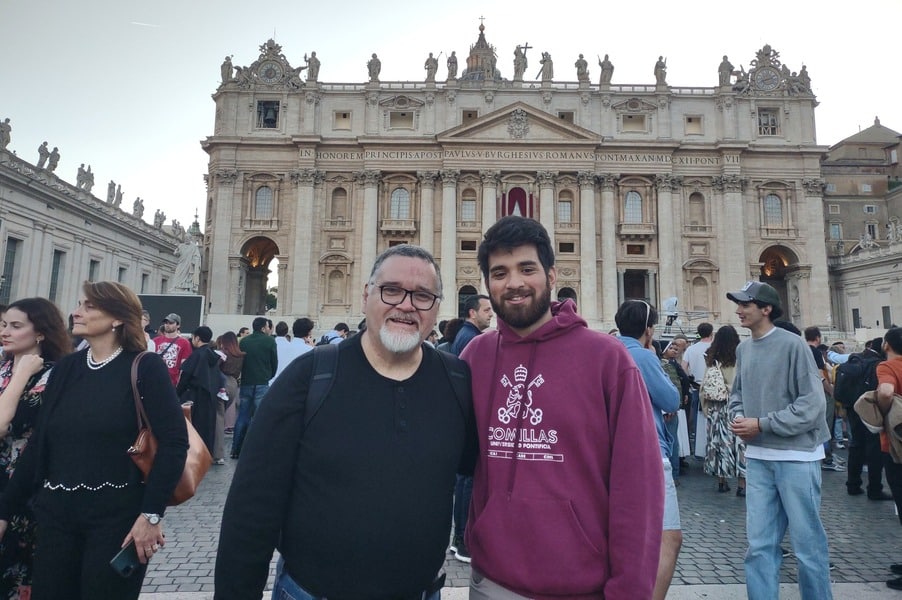Pope Francis’s passing on April 21 and the election of Pope Leo XIV on May 8 mark a significant moment in recent Catholic history. The elevation of Robert Prevost brings the Catholic Church its second pope from the New World, its first U.S. pontiff and the first pope to hold Peruvian citizenship – making him both the first North and South American pope.
Yet many in the English-speaking world overlook a key element in his background: his roughly 24 years in Peru. While excitement is natural – certainly felt in Peru – a blind spot in much English-language media fails to recognize the profound impact of his experience as missionary and Peruvian bishop, who, over nearly a quarter-century, grew deep roots in a country where he likely expected to remain at least until retirement as bishop of Chiclayo. This information is available in Spanish sources. Overlooking this dimension misses the very essence of the man the cardinals have chosen.
Robert Prevost’s Peruvian Journey
For more than two decades, the future pope immersed himself in Peruvian culture and church life. This was not a temporary assignment. It was a gradual, profound integration into Peruvian Catholicism, its pastoral life and public presence.
Chulucanas
After his 1982 ordination, Robert Prevost began ministry in Chulucanas, Peru, in 1985. This district is in the northern coastal desert, about 600 miles from Lima. The region includes Chiclayo and Trujillo. Chulucanas had about 479,000 residents, 85 percent Catholic. His early years in Peru coincided with a turbulent period in the country’s history, marked by insurgencies, terrorism, and economic crisis. After briefly returning to the U.S. (1987–1988) to promote vocations and raise funds, he resumed ministry in Peru in 1988, joining the Augustinian mission in Trujillo.
Trujillo
The Archdiocese of Trujillo, about 350 miles north of Lima, has around 1.6 million people, with roughly 1.15 million Catholics served by 76 parishes and 35 churches. In Trujillo, Father Prevost led Augustinian formation and held diocesan roles: prior (1988–1992), director of formation (1988–1998), and master of the professed (1992–1998). He also served as judicial vicar for the archdiocese (1989–1998), taught at the seminary and was director of studies at the priestly formation center, where he was rector for a year. Trujillo housed the Augustinians’ largest formation center. After a decade of service, he was elected prior provincial and returned to Chicago, beginning his term in 1999. Two years later, in 2001, he became prior general of the Augustinians, serving two terms and gaining regular contact with the Vatican.
Chiclayo
After two terms as prior general, Father Prevost was appointed to Chiclayo as director of formation at the Convent of San Agustín (2014). Chiclayo has about 1,382,000 residents, with 1,150,000 baptized Catholics, served by more than 50 parishes, 2 missions and around 90 diocesan and 17 religious priests. He also served as first councilor and provincial vicar of the Augustinian province.
On Nov. 3, 2014, Pope Francis appointed him titular bishop of Sufar and apostolic administrator of Chiclayo. He was consecrated bishop on Dec. 12. In September 2015, he became bishop of Chiclayo. As such, he embodied the principle, “Where the bishop is, there is the church,” receiving and sending missionaries. He obtained Peruvian citizenship in 2015. He also served as grand chancellor of a local Catholic university with close ties to the diocese. During the 2017 and 2018 floods in northern Peru, he played a visible role in relief efforts, supporting Catholic charities and using online platforms to coordinate aid.
Other assignments and national presence
The future pope held other important positions, including apostolic administrator of the Diocese of Callao in the Lima metropolitan area (Peru’s capital city) from April 15, 2020, to May 26, 2021. This urban diocese has about 1.7 million residents, 83 percent Catholic, served by 58 parishes, 35 missions and 120 priests. He held this post concurrently with his role as bishop of Chiclayo. He also served as second vice president of the Peruvian Bishops’ Conference. He spoke out during moments of national importance. After the 2017 pardon of former President Alberto Fujimori, he publicly urged Fujimori to apologize to victims of human rights violations.
A Unique Pontificate
Pope Leo XIV’s extensive Peruvian experience shaped him as deeply as his U.S. upbringing, forging a unique blend of North and South American sensibilities rather than simply making him a “citizen of the world.” His assignments exposed him to many centers and peripheries (local, regional, and global), further honed during his tenure as prior general of the Augustinians and service in the Dicastery for Bishops.
Hence, the cardinals elected a pontiff who inherits the church’s New World complexity, encompassing Spanish, English, immigrant and Black Creole heritages. He embodies both Anglo and Latin American identities as missionary and bishop, immigrant in the tradition of St. Frances Cabrini and Mother Mary Lange, and pastor following St. John Neumann and St. Turibius of Mogrovejo. As a “first,” he walks in the footsteps of St. Rose of Lima and serves as bridge builder like St. Martin de Porres.
The cardinals’ choice fulfills Pope St. John Paul II’s unifying vision as expressed in his apostolic exhortation Ecclesia in America. His complexity is captured in his full name: Robert(o) Francis(co) Prevost Martínez. His journey promises a papacy that can bridge divides and lead the church deeper into its catholicity.
Read More Commentary
Copyright © 2025 Catholic Review Media
